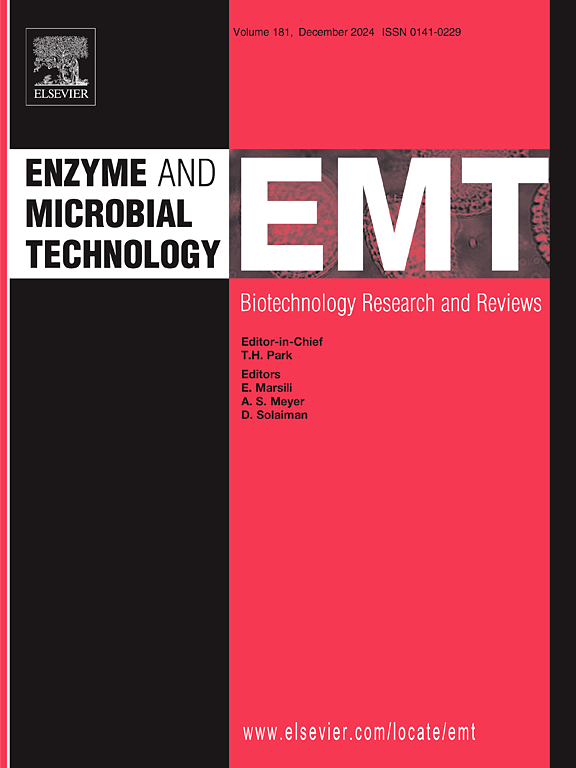Arazyme通过调节基质金属蛋白酶和胶原合成来防止皮肤老化
IF 3.7
3区 生物学
Q2 BIOTECHNOLOGY & APPLIED MICROBIOLOGY
引用次数: 0
摘要
在涉及皮肤细胞治疗和动物皮肤局部应用的研究中,Arazyme是一种源自蛋白沙雷氏菌的酶,已证明具有增强皮肤屏障功能的功效。本研究的目的是评估Arazyme在紫外线B (UVB)辐射和氧化应激下皮肤角质形成细胞和成纤维细胞中的抗皱和抗衰老作用。将角质形成细胞(HaCaT细胞)和成纤维细胞(CCD-986sk)暴露于UVB (15 mJ/cm²)辐射或2 mM 2,2 ' -偶氮(2-氨基丙烷)二盐酸(AAPH)诱导的氧化应激下,然后用Arazyme(0.1-0.5 μM)处理24 h。将Arazyme的效果与作为参比化合物的木瓜蛋白酶、胰蛋白酶或视黄醇单独处理的效果进行了比较。检测的关键参数包括基质金属蛋白酶(MMP-1、MMP-3和MMP-13)、胶原合成和细胞衰老标志物(LMNB1、p16、p21和p53)的表达。此外,我们还评估了Arazyme对细胞信号通路的影响,包括ERK、JNK和NF-κB。与其他处理相比,Arazyme以剂量依赖的方式显著抑制uvb诱导的HaCaT细胞中MMP-1、MMP-3和MMP-13的表达。在uvb暴露的成纤维细胞中,Arazyme降低MMPs mRNA和蛋白水平,同时提高前胶原浓度和胶原基因表达。此外,Arazyme抑制角化细胞中ERK、JNK和NF-κB信号通路的激活。在aaph刺激的HaCaT细胞中,Arazyme显著降低了衰老相关标志物LMNB1、p16、p21和p53的表达,降低了成纤维细胞中衰老阳性细胞的比例。我们的体外研究结果表明,Arazyme可能有助于减弱UVB和氧化应激诱导的皮肤衰老标志物,这表明它有潜力在抗衰老护肤研究中进一步研究。本文章由计算机程序翻译,如有差异,请以英文原文为准。
Arazyme prevents skin aging through regulation of matrix metalloproteinase and collagen synthesis
Arazyme, an enzyme derived from Serratia proteamaculans, has demonstrated efficacy in enhancing skin barrier function in studies involving skin cell treatments and topical application on animal skin. The objective of this study was to assess the anti-wrinkle and anti-aging effects of Arazyme in skin keratinocytes and fibroblasts subjected to ultraviolet B (UVB) radiation and oxidative stress. Keratinocytes (HaCaT cells) and fibroblasts (CCD-986sk) were exposed to UVB (15 mJ/cm²) radiation or oxidative stress induced by 2 mM 2,2′-azobis(2-amidinopropane) dihydrochloride (AAPH), followed by treatment with Arazyme (0.1–0.5 μM) for 24 h. The effects of Arazyme were compared to those of individual treatments with papain, trypsin, or retinol, which served as reference compounds. Key parameters examined included the expression of matrix metalloproteinases (MMP-1, MMP-3, and MMP-13), collagen synthesis, and cellular senescence markers (LMNB1, p16, p21, and p53). Additionally, the impact of Arazyme on cellular signaling pathways, including ERK, JNK, and NF-κB, was assessed. Arazyme significantly suppressed UVB-induced expression of MMP-1, MMP-3, and MMP-13 in a dose-dependent manner in HaCaT cells compared to other treatments. In UVB-exposed fibroblasts, Arazyme reduced both mRNA and protein levels of MMPs, while also enhancing procollagen concentration and collagen gene expression. Furthermore, Arazyme inhibited the activation of ERK, JNK, and NF-κB signaling pathways in keratinocytes. In AAPH-stimulated HaCaT cells, Arazyme significantly attenuated the expression of senescence-related markers, including LMNB1, p16, p21, and p53, and decreased the proportion of senescence-positive cells in fibroblasts. Our in vitro findings suggest that Arazyme may help attenuate UVB- and oxidative stress-induced markers of skin aging, indicating its potential as a candidate for further investigation in anti-aging skincare research.
求助全文
通过发布文献求助,成功后即可免费获取论文全文。
去求助
来源期刊

Enzyme and Microbial Technology
生物-生物工程与应用微生物
CiteScore
7.60
自引率
5.90%
发文量
142
审稿时长
38 days
期刊介绍:
Enzyme and Microbial Technology is an international, peer-reviewed journal publishing original research and reviews, of biotechnological significance and novelty, on basic and applied aspects of the science and technology of processes involving the use of enzymes, micro-organisms, animal cells and plant cells.
We especially encourage submissions on:
Biocatalysis and the use of Directed Evolution in Synthetic Biology and Biotechnology
Biotechnological Production of New Bioactive Molecules, Biomaterials, Biopharmaceuticals, and Biofuels
New Imaging Techniques and Biosensors, especially as applicable to Healthcare and Systems Biology
New Biotechnological Approaches in Genomics, Proteomics and Metabolomics
Metabolic Engineering, Biomolecular Engineering and Nanobiotechnology
Manuscripts which report isolation, purification, immobilization or utilization of organisms or enzymes which are already well-described in the literature are not suitable for publication in EMT, unless their primary purpose is to report significant new findings or approaches which are of broad biotechnological importance. Similarly, manuscripts which report optimization studies on well-established processes are inappropriate. EMT does not accept papers dealing with mathematical modeling unless they report significant, new experimental data.
 求助内容:
求助内容: 应助结果提醒方式:
应助结果提醒方式:


